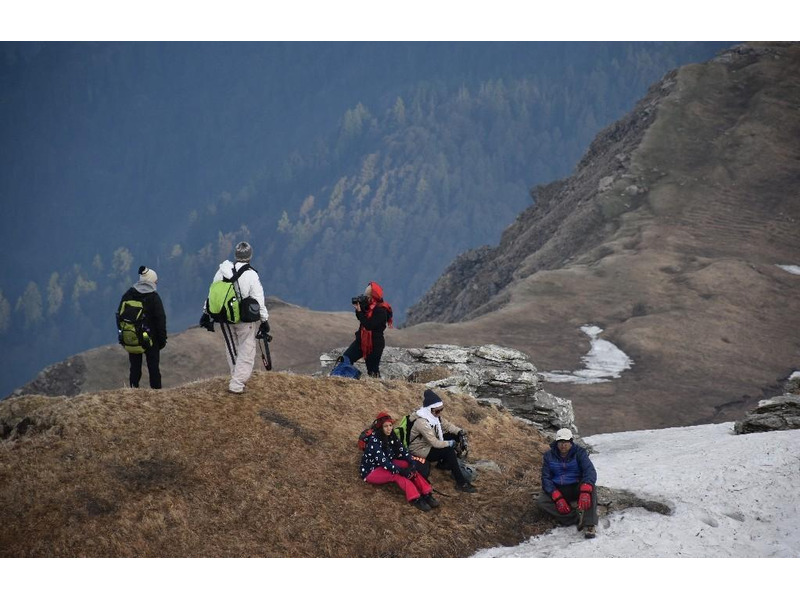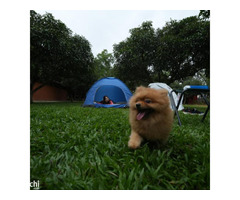The Sar pass is located in the Kullu district of Pradesh. Sar, in the local dialect, means a lake. Trekking, across the path from Tila Lotni to Biskeri Ridge, one has to pass by a small, frozen lake (Sar) and therefore the name Sar Pass Trek emerged. The trail takes you through the ordination of picturesque grasslands and forests conjugated with steep rocky terrain and snow patches. Trek route emerges from Kasol and goes through Grahan, Ratta Pani, Nagaru and Barsheni.
The Sar Pass trek offers many trails through deep forests, grasslands, snowy mountains, and charming villages. It is an excellent trekking point for beginners and moderate level trekkers. It receives its name from ‘Sar,’ which means lake. The ‘Sar’ which is mostly frozen till late in summer needs to be crossed by trekkers and hence the name ‘Sar Pass Trek’. The trek starts from the quaint village of Kasol and trekkers cross forests and steep rocky terrains to encounter long stretches of snow on Pass Day. The incredible views of the snowy peaks of the Parvati valley in addition to the snow trail will definitely leave you amazed. It is surely one of the most refreshing treks in Himachal Pradesh.
Know More About Sar Pass
The Sar Pass trek differs between easy to moderate level of difficulty, and no prior trekking experience is required. Since the ‘easy-moderate’ is relative to other difficult treks in the Himalayas, Sar Pass commands a moderate level of fitness from all trekkers. The treks include a near-vertical incline at the top and equally steep descent. The air above 12,000 ft. is very thin, and the oxygen levels are considerably lower, which increases the level of difficulty. It is mandatory to follow a regular fitness regime to ensure your body adapts well to the lower oxygen on the trek.
Sar Pass Trek Is Safe For Travelers!
Ensuring the safety of trekkers is our top priority, which means that if you’re a trekker, you can rest assured that your safety is in good hands. The services like (rooms and tents) are separate for male and female trekkers, besides which, our trek leaders are extremely helpful and approachable.
Who Can Do Trekking In Sar Pass?
The Sar Pass trek is an easy to average level trek. Naturally, this means that trekkers must have a decent amount of fitness. You should be able to jog for 5 km in about 35 to 40 minutes to increase cardiovascular endurance. Make your muscles stronger by doing 3 sets of squats with 15 reps per day, and some yoga asanas. This will aid acclimatization, and facilitate adaptability to lower oxygen levels on high altitudes.
What Is The Best Time Do Sar Pass Trek?
May to October is perfect for the Sar Pass trek since the snow cover at lower altitudes has melted away, leaving behind a quilt of fresh greenery. Though there will be a good amount of snow on higher altitudes. After October, the snow cover is too high to try the trek.
Make sure you’re well hydrated. However, if you are feeling down with symptoms like Acute Mountain Sickness (nausea and headache are the prime symptoms), inform your trek leader immediately. Our trek leaders are well equipped with an extensive medical kit and oxygen cylinders for emergency situations. If you are suffering from any type of disease make sure to consult your trek leader before starting your course.
Sar Pass:
Location: Kasol, Parvati Valley
Duration: 6Days/ 5 Nights
Level: Moderate
Max Height : 13,800 ft
Pick Up/Drop: Suma Ropa/Kasol
Price Includes:
Accommodation
Meals
Rucksack
Camping charges
Trekking equipment
Gaiters
Safety equipment
Expert trek Leaders
Expert Trek Support Team
Personal Insurance
Cloakroom service to deposit your extra luggage
Price Excludes:
Transportation and food to and from the base camp
Backpack offloading charges
Any Private Expenses
Cost of Emergency
Bottled Water
Mandatory Documents:
Medical Certificate (signed by a registered MBBS doctor)
NOC form (by trekker)
Original and photocopy of government photo identity card- (Aadhar card)
Things to carry:
Trekking shoes: Carry trekking shoes good grip and ankle support. Do not carry sports shoes.
Three layers of warm clothes: Carry two or three-layer jackets, fleece jackets and a padded jacket.
Two/Three trek pants: Carry light cotton trek pants. Denim/jeans and shorts are not suitable for trekking.
Three t-shirts (collared/dry-fit): Full sleeved t-shirts that prevent sunburns on the neck and arms. Carry one or two dry-fit t-shirt
Thermals: Carry thermals (top and bottom).
Sunglasses: Sunglasses are mandatory. There will be a lot of snow on the trek and can cause snow blindness.
Cap: At high altitude, the sun is extra harsh so carry a cap to protect yourself.
Waterproof hand gloves: Carry waterproof gloves and avoid woollen gloves as they will get wet if you touch snow.
Socks (3-4 pairs) and a pair of woollen socks: Apart from two sports socks, you can take a pair of woollen socks for the night.
Headlamp/LED torch: Mandatory
Raincoat/Ponchos: At high altitudes, snowfall and rain are quite common and it’s mandatory to carry a poncho so that you don’t get wet. The trek will continue as planned even during rainfall. Your poncho should protect you rain. Carry a backpack cover for extra protection from rain for your belongings.
Daypack (20 litres): You will need this to carry water bottles, lunch box and personal medical kit in case you decide to offload your backpack.
Lunch box and water bottle: Every participant should have their personal lunch box and a good water bottle.
How to Reach Kasol?
By Bus: Take a bus headed towards Manali/Kullu from Delhi/Chandigarh and get down at Bhuntar (10 km before Kullu) and take a local bus/taxi to Hotel Blue Diamond. Follow Kailashrath Treks landmark for the base camp. Volvo buses to Kullu/Kasol leaves between 5 pm to 9 pm from Delhi.
Pick up/Drop
Trekkers must report at Katagla base camp at 11 am. POC details will be emailed prior to the event.


 Loading
Loading













